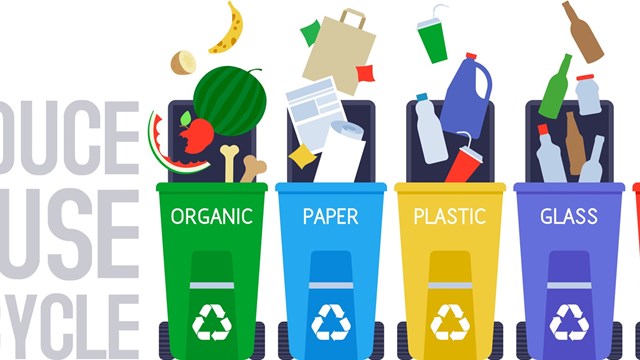It's almost impossible these days to open the daily newspaper and not see an article on the rapid growth of green building, the technique of using sustainable design to build homes with renewable materials used prudently in an effort to conserve energy and environmental resources. Indeed, according to a recent survey of home builders by the National Association of Home Builders (NAHB) and McGraw Hill Construction, one out of every 10 homes built will be "green" by the year 2010. And 85 percent of green homeowners surveyed say they are happier with their new green home than they were with their previous, more traditionally built home, in part because of the lower operating and maintenance costs that come with energy- and resource-efficient homes.
But what about the 120 million existing homes in the United States? For these homeowners, remodeling is the only way to incorporate green into their homes. For homeowners who want to take advantage of the benefits that green offers, NAHB Remodelers, the leading professional organization for the remodeling industry, offers a list of the "Top 7" projects that bring about the most bang for the buck.
While these recommended projects will offer equal benefit to owners of condominiums and single-family homes, implementing them can be a much more charged issue for the condo owner. Key to a successful renovation project is to determine who owns and is therefore in charge of the given bit of condo under consideration. An individual owner might be able to replace windows, if he or she selected from an architecturally approved style of window, but the association would step in to handle a community-wide effort if the windows were common property. A definition of who owns what can be found a condominium's documents, which should be consulted before embarking on a renovation project.
1. Install maximum insulation in the area to be remodeled.
Outfitting an existing home with the proper insulation is one of the easiest ways to increase efficiency. Particularly in older homes, an enormous amount of potential to increase efficiency is available in the attic. Insulation is rated by its ability to resist heat flow, commonly known as its "R-value." The higher the R-value of a material, the better its ability to resist heat flow.
Because 40 percent of the energy consumed in a typical household goes to heating and cooling, by increasing your insulation, you can save substantially on energy costs. An additional benefit of increased insulation is improved home comfort because the insulation reduces heat loss in the winter and retains cooler air during the summer. It also improves indoor air quality by filling gaps and voids through which dirt, dust, and other impurities can enter.
2. Install high-efficiency windows instead of windows that just meet the energy code.
Ordinary window glass transmits ultraviolet heat from the sun. While this may work in your favor during the winter, the summer effects can increase your air-conditioning bill dramatically. By replacing your windows with Energy Star windows, you can help control this effect and reduce energy bills. These windows may have two or more panes of glass, warm-edge spacers between the window panes, improved framing materials, and Low-E coating(s)—microscopically thin metal or metallic oxide layers deposited on windows to reduce radiative heat flow. This coating reflects heat while letting light in the summer, but works to maintain heat inside the home during the wintertime. Your initial investment may cost a little extra, but you will more than receive your money's worth is energy savings over the long term.
3. Seal all exterior penetrations in the area being remodeled.
Another simple and inexpensive tip for making your home more energy efficient is to reduce heat loss by sealing all penetrations in the building envelope. The first step to reduce cold air drafts and heat loss is to inspect your home from both the inside and outside. Check the areas where window frames meet the structure or siding of the house. Plug any cracks or openings with caulking or weatherstripping. Caulking should be used to seal all small cracks on non-moving surfaces, inside and out. Weatherstripping should be added to windows, doors, and other movable parts of the home.
4. Purchase only Energy Star-rated appliances.
If you are in the market to upgrade any major appliances, consider purchasing an Energy Star—rated product. These products, ranging from dishwashers and refrigerators to computers and televisions, meet strict energy-efficiency guidelines set by the EPA and U.S. Department of Energy. Qualified refrigerators, dishwashers, and vent fans incorporate technologies that use 10—50 percent less energy and water than standard models, more than making up for the slightly higher costs of these products.
5. Install low-flow plumbing fixtures.
By installing low-flow plumbing fixtures such as toilets, faucet aerators, and showerheads, homeowners save substantial amounts of water compared to the amount used by conventional fixtures while providing the same functionality. New toilets have redesigned bowls and tanks that use less water but function more efficiently than first-generation low-flow models. Some models use pumps for supplementary water pressure. In the average home, flushing toilets accounts for some 30 percent of water usage. New efficient models can reduce that use up to 25 percent.
6. Upgrade to an Energy Star-rated water heater, or better yet, a tankless water heater.
Selecting a more efficient and correctly sized water heater also will save you money. Tankless water heaters provide hot water on demand at a preset temperature rather than storing it, which reduces or eliminates standby losses. Replacing an electric water heater with a solar model can reduce costs by up to 80 percent a year, and over the 20-year lifespan of the appliance will prevent more than 50 tons of carbon dioxide emissions. If this isn't an option for you financially, try wrapping insulation around your heater to reduce energy costs—it can reduce standby heat losses by 25 to 45 percent.
7. Purchase the highest efficiency HVAC system you can afford.
Over a 10-year period, the average homeowner spends more than $10,000 for heating and cooling. Installing high-efficiency Energy Star—rated HVAC equipment can dramatically reduce a homeowner's utilities costs, on average by 10 to 30 percent over minimum efficiency equipment. Not only does higher efficiency HVAC equipment reduce costs, it can also improve home comfort in several ways, including increased stability in your home's temperature and a quieter operation. The systems also feature higher quality components, which, in turn, result in longer equipment life.
Going green means not only feeling good about the environment, but feeling good in your pocketbook. Incorporating green elements into your projects saves money on utility bills, creates beautiful spaces, and makes a home a more comfortable place in which to live. Helping save the planet doesn't hurt either.






Leave a Comment